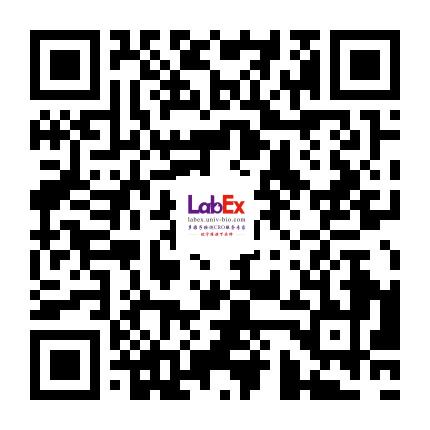Cold-induced asthma exacerbation through disruption of murine airway epithelial barrier
occludin expression, epithelial barrier function, asthma exacerbation, cold exposure, Beas-2B cells, Nedd4-2, SGK1, proteolysis, TRPV4 antagonists, pulmonary permeability, 闭锁蛋白表达, 上皮屏障功能, 哮喘加重, 冷暴露, Beas-2B细胞, Nedd4-2, SGK1, 蛋白水解, TRPV4拮抗剂, 肺通透性 LabEX支持文献- 2022
- mouse
- MSD
- BALF supernatant
- IL-1β, IL-4, IL-5, IL-6, IL-10, KC/GR [CXCL1]
相关货号
Abstract
Background: Cold exposure is a common factor to trigger asthma attacks. However, the underlying mechanism has not been thoroughly elucidated. We aimed to investigate the hypothesis that low temperature reduces occludin expression and compromises the epithelial barrier function in airways, which in turn, results in asthma exacerbation.
Methods: We examined occludin expression in Beas-2B cells exposed to either 29 °C or 37 °C. The following drugs were administered prior to cold treatment: MG132 (a proteasome inhibitor), cycloheximide (a protein synthesis inhibitor), HC-067047 plus GSK2193874 (transient receptor potential vanilloid 4 [TRPV4] antagonists), or C4-ceramide (a glucocorticoid-inducible kinase [SGK1] activator). siNedd4-2 was transfected into Beas-2B cells to investigate the role that Nedd4-2 plays in mediating occludin instability induced by cold. In animal experiments, we treated ovalbumin (OVA)-induced asthmatic mice with a thermoneutral temperature of 30 °C or cold exposure (10 °C, 6 h/day) for 2 weeks. MG132, GSK2193874 or C4-ceramide was administered during the cold treatment. Occludin expression of the lung, pulmonary permeability, serum IgE levels, and lung inflammation were assessed.
Results: Treatment at 29 °C for 1-9 h significantly reduced the expression of occludin in Beas-2B cells, which was rescued upon treatment with MG132, HC-067047 plus GSK2193874, C4-ceramide, or Nedd4-2 knockdown. Low temperatures affected occludin stability through SGK1/Nedd4-2-dependent proteolysis. In vivo mice data revealed that cold exposure compromised the airway epithelial barrier function, decreased occludin expression, and exacerbated lung inflammation, which was attenuated by the GSK2193874 or C4-ceramide injection.
Conclusion: We identified a new mechanism underlying cold-induced asthma exacerbation involving Nedd4-2-mediated occludin proteolysis and epithelial barrier disruption.
LabEx MSD平台推动寒冷暴露下哮喘发作的致病机制
本周为大家带来的文献为发表Mol Immunol. (IF: 3.2)的” Low temperature reduces occludin expression in bronchial epithelial cells: Implications in cold-induced asthma”。本文使用了LabEx提供的MSD检测服务。
作为最常见的呼吸系统疾病之一,哮喘影响全球超过3亿人。据估计,到2025年将新增约1亿例哮喘病例。然而,哮喘尚无法治愈;目前的管理模式主要集中在症状控制和避免触发因素。基因-环境相互作用在哮喘的发病机制中起主要作用。因此,研究环境刺激下哮喘发作的分子机制至关重要。
寒冷暴露与儿童和成人哮喘发作风险增加有关。一项包括26项研究、涉及14个国家超过2600万参与者的荟萃分析显示,气温每下降1 °C,哮喘发作的风险增加5%。为了探索寒冷诱发的哮喘加重,已经建立了几种动物模型。有研究建议,将哮喘小鼠饲养在30 °C的热中性温度下,相比于20 °C的标准温度,气道炎症和高反应性可以显著缓解。此外,有研究显示,在10 °C下反复暴露会加重小鼠的哮喘症状。然而,在寒冷条件下哮喘发作的确切机制尚不清楚。
该研究旨在研究低温是否通过减少闭合蛋白表达和削弱气道上皮屏障功能,从而导致哮喘加重的假设。
研究者在暴露于29°C或37°C的条件下,检查了人支气管上皮细胞系(Beas-2B)细胞中闭合蛋白的表达。以下药物在冷处理前给予:MG132(蛋白酶体抑制剂)、环己酰亚胺(蛋白质合成抑制剂)、HC-067047加GSK2193874(瞬时受体电位香草酸4 [TRPV4] 拮抗剂)或C4-神经酰胺(糖皮质激素诱导激酶 [SGK1] 激活剂)。siNedd4-2转染到Beas-2B细胞中,以研究Nedd4-2在介导冷诱导的闭合蛋白不稳定性中的作用。在动物实验中,研究者对用卵白蛋白(OVA)诱导的哮喘小鼠进行30°C的温热处理或冷暴露(10°C,6小时/天)2周。在冷处理期间给予GSK2193874或C4-神经酰胺。评估肺的闭合蛋白表达、肺通透性、血清IgE水平和肺炎症。
LabEx提供的MSD检测服务,
在动物麻醉后,用1 mL冰冷的PBS通过气管注入小鼠肺部,然后缓慢抽出,该过程重复两次。收集的支气管肺泡灌洗液(BALF)在4 °C、1000 rpm下离心5分钟。使用V-PLEX Proinflammatory Mouse Kit(LXMM10-1, Meso Scale Discovery,)检测BALF上清液中的炎性细胞因子水平(包括IL-1β、IL-4、IL-5、IL-6和KC/GR [CXCL1])。
BALF中的炎性细胞因子水平如图所示。研究者观察到OVA和PBS组之间在IL-1β (P < 0.0001)、IL-4 (P < 0.01)、IL-5 (P < 0.05)、IL-6 (P < 0.01)和KC/GRO (P < 0.001)水平上存在显著差异(图A-E)。反复冷暴露(10 °C)显著增加了BALF中IL-1β (P < 0.01)、IL-4 (P < 0.01)和IL-5 (P < 0.05)的水平(图A、B和C)。在OVA+10 °C组中,C4-CER的给药显著降低了BALF中IL-5和KC/GRO的水平(P < 0.05;图C和E)。

重要发现,
低温处理(29°C)显著降低了Beas-2B细胞中1至9小时的闭合蛋白表达,这一现象通过MG132、HC-067047加GSK2193874、C4-神经酰胺或Nedd4-2敲除得到了拯救。低温通过SGK1/Nedd4-2依赖性蛋白水解影响闭合蛋白的稳定性。体内小鼠数据表明,冷暴露削弱了气道上皮屏障功能,降低了闭合蛋白表达,并加重了肺炎症,这一现象通过GSK2193874或C4-神经酰胺注射得到缓解。
研究者发现了一种冷诱导哮喘加重的潜在机制,涉及Nedd4-2介导的闭合蛋白蛋白水解和气道上皮屏障破坏。
本网站销售的所有产品及服务均不得用于人类或动物之临床诊断或治疗,仅可用于工业或者科研等非医疗目的。







 沪公网安备31011502400759号
沪公网安备31011502400759号
 营业执照(三证合一)
营业执照(三证合一)


